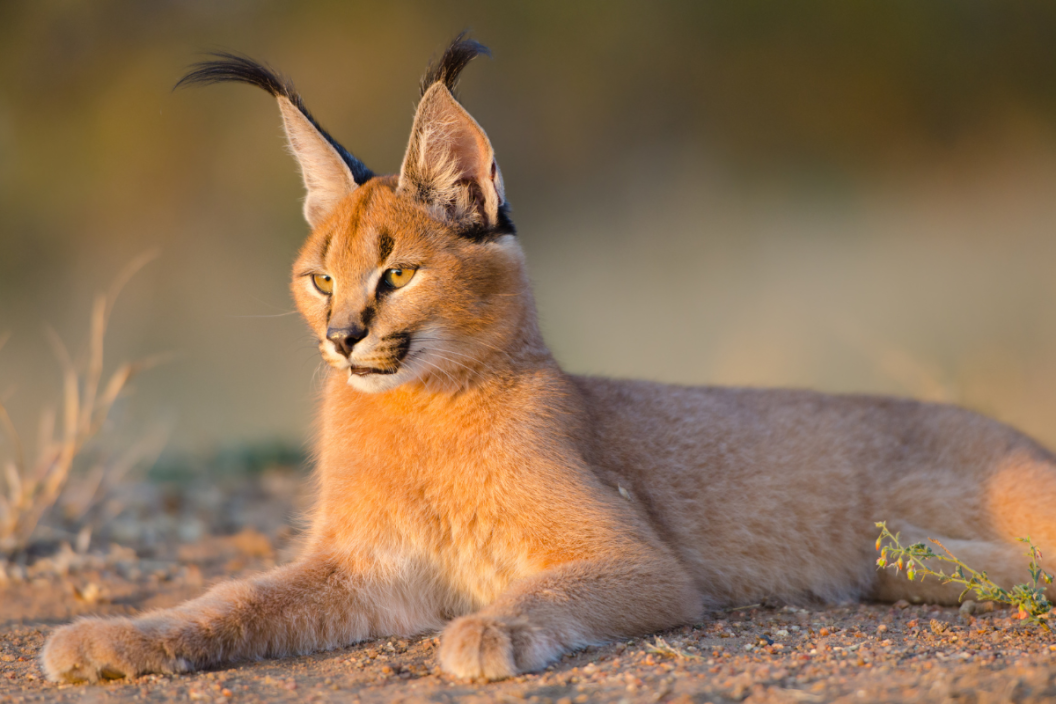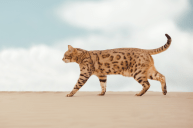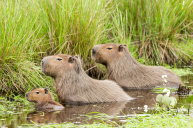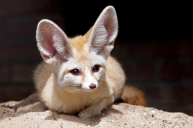Struggling to decide what your next pet cat might be? When everyone has a tabby, you might think the standard house cat just won't cut it. Even the massive Maine coon may seem a little mundane.
Thankfully, feline fanatics have plenty of options when it comes to exotic pets (assuming they're legal to own in your state). The serval is a beloved wild cat, but isn't for the faint of heart. On the more tame side of the spectrum, you have the Bengal, a popular domesticated cat that is still capable of showing off its wild side. Meanwhile, the Savannah cat is a frisky feline that looks much closer to its distant cousin the cheetah than its domesticated kin.
If you're seeking a lesser-known big cat as an option to bring into your home, you might consider a caracal. Caracals are rare to see outside of a reserve or wildlife sanctuary, but can be kept as house cats. Still, just because you can have a caracal as a pet doesn't mean you should. Here's what to know about these big cats.
What Is a Caracal?
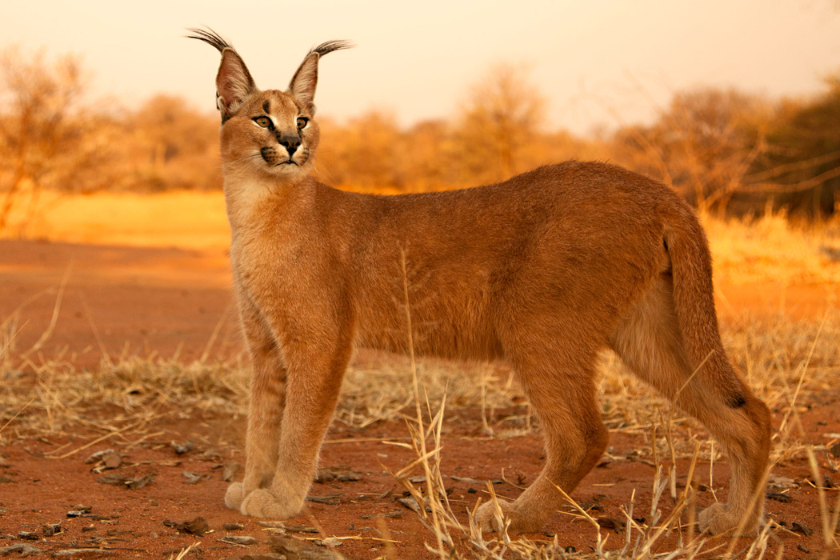
Getty Images, MarieHolding
Known for features like their fur-winged ears, these exotic cats are quite a bit larger than your average domestic cat, at an average of 37 pounds (and up to 70!) and 28 inches long, excluding their tail. The name "caracal" comes from the Turkish word "karakulak," meaning black ear, for those big black tufts of hair that span from these adorable exotic animals' ears.
According to the Barry R. Kirshner Wildlife Foundation, which is home to Zeus the caracal, these wild animals are generally found in Africa, the Middle East, Central Asia, and India. Their natural habitat is one with open savannas, woodlands, forests, and semi-deserts—arid areas—and can survive with very little water. Because of this, they're often referred to as the desert lynx or Persian lynx. However, they are more closely related to the African golden cat and are not actually a part of the lynx family.
Other animals that share this cat's habitat are the African leopard and the South African cheetah. Servals also live in the same type of environment, but the two species eat different kinds of prey, allowing these two carnivores to coexist.
Caracals are a quiet cat species that are generally solitary animals, though they are often spotted in areas like Kruger National Park in South Africa.
What Do Caracals Eat?
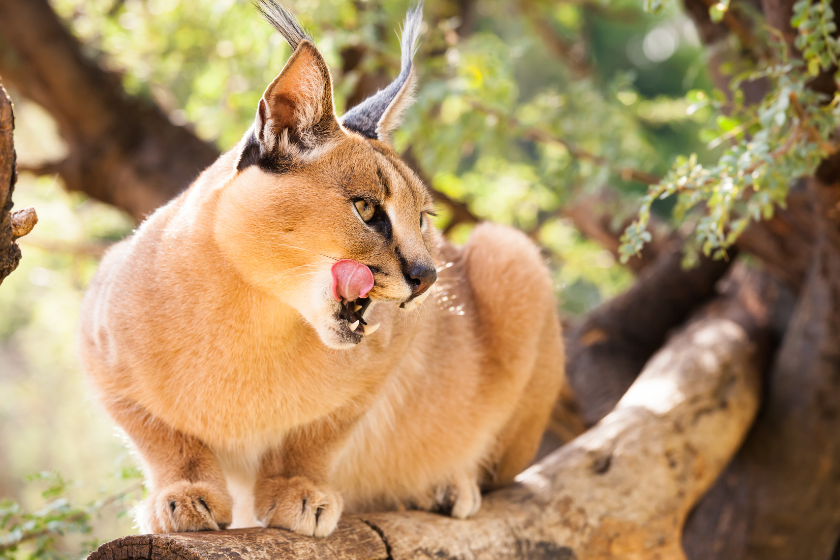
Getty Images, lightstock
These big cats eat a lot of meat. In the wild, they eat hares, small monkeys, hyraxes, small antelopes, and birds. They can also eat larger animals like springboks, mountain gazelles, and mountain reedbucks. Caracals have also been known to go after livestock, and they never waste food. Leftovers are kept in trees and bushes for them to snack on later. They don't need very much water—an adaptation to their arid environments.
Where Can You Legally Own a Caracal as a Pet?
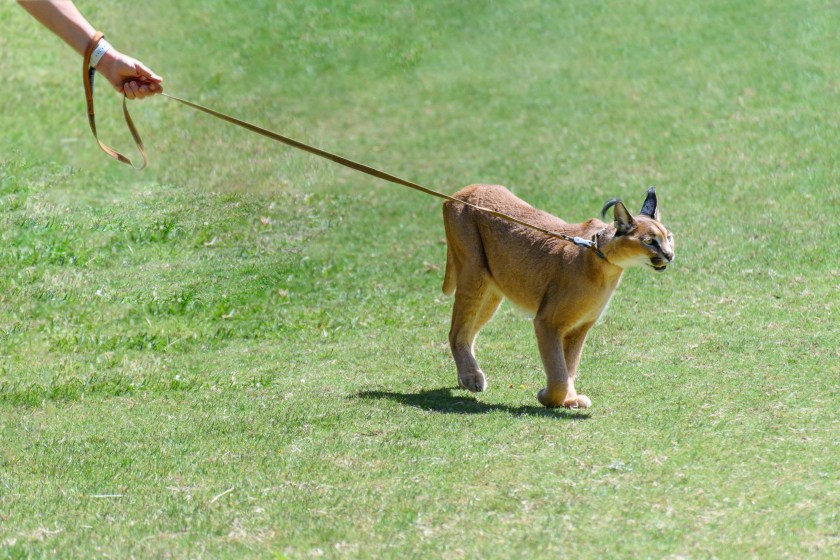
Getty Images, barbaraaaa
While big cat ownership was outlawed federally, caracals are not on the list of affected cats, which leaves the decision in the hands of individual states. Each state's laws vary for big cat ownership. The four states of Alabama, Nevada, North Carolina, and Wisconsin have no laws pertaining to owning exotic animals as pets. Six states have no ban or regulations on big cats as pets: Alabama, Delaware, Nevada, North Carolina, Oklahoma, and Wisconsin.
However, 13 states outright ban large exotic cats as pets: California, Colorado, Georgia, Maine, New Hampshire, New Jersey, New Mexico, New York, Oregon, South Carolina, Utah, Vermont, and Washington.
Habitats for Pet Caracals
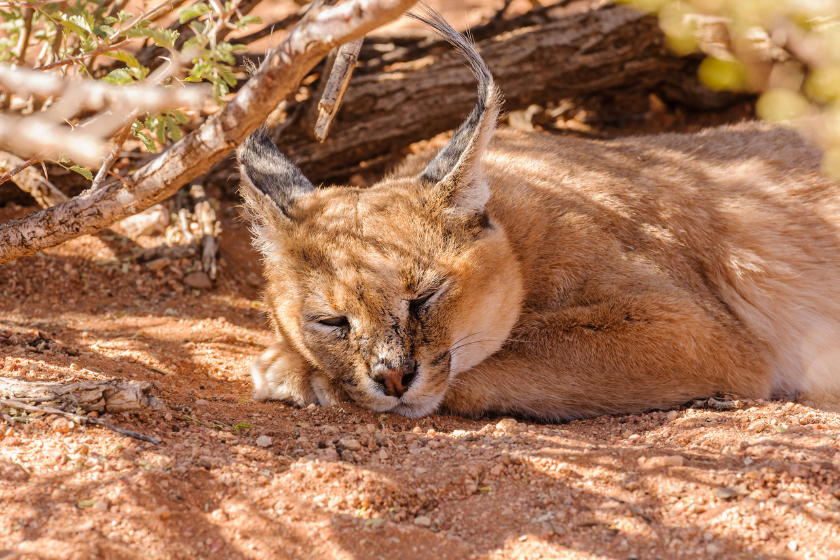
Since they are not small cats, they will need large covered enclosures so they have plenty of room. Their habitat should be similar to what they would have access to in the wild, with places to hide and run.
It is important that if you have a caracal as a pet that they do not get out of their enclosure. They may be scared and not know how to find their way back home. Most importantly, they are wild at heart and may attack people or livestock.
Caracals As Pets
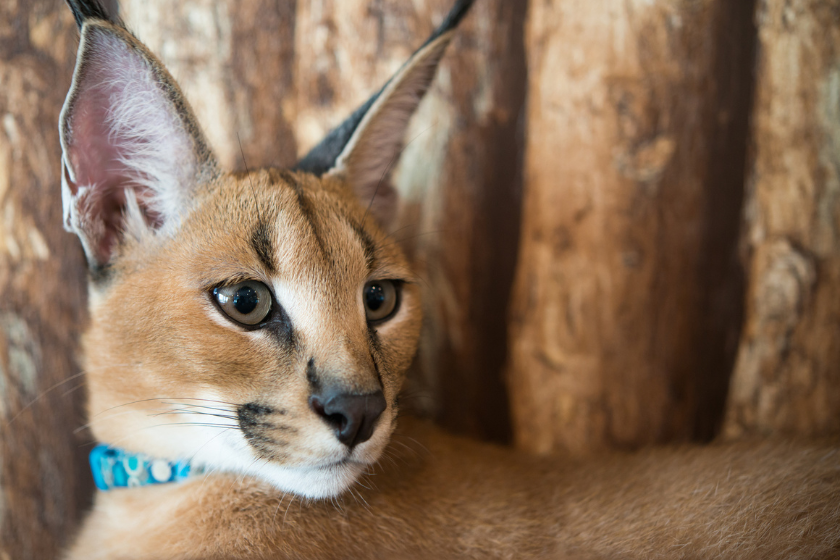
Breeders can mate a caracal once they turn one year old. Female caracals have a fairly short gestation period of just 69 to 78 days—and they will have anywhere from one to six kittens at a time. After three months, caracal kittens will make their way into the world, and kittens stay with their mothers for up to ten months before they can go out on their own.
Caracals hiss, spit, purr, and meow just like their domestic cousins. They are known to be incredibly territorial and lord over large areas, in some cases up to 400 square miles. They have a lifespan of 19 years and can grow up to 17 inches tall, and weigh anywhere from 37 to 70 pounds. The cats are mostly nocturnal and are awake briefly during the day.
According to Big Cat Rescue, these cats can cost anywhere from $1,700 to $2,800 to buy if your state laws allow you to have one. However, owning a caracal pet is more complicated than simply purchasing one from a breeder.
There are also a lot of costs associated with owning an exotic cat. A pet caracal may only run $2,000, but they need to be fixed, and it can be difficult to find a veterinarian who will take care of your pet. There is also a matter of food costs. Caracal pets eat 2-3 pounds of food a day, which needs to be fresh meat. They also need to have supplements to make sure they are healthy. Each year, they need to get vaccinations. Deworming and flea and tick prevention also need to be considered for these big kitties. You will also need to consider how you will get them to and from these appointments; it's not as simple as just putting them into the back of your car...
Enclosures can be very expensive as well since you need to be sure they do not get out. It can run about $10,000 per acre to build an enclosure for your pet caracal.
And, of course, the permit can be quite costly and challenging to get. You will have to have a special provision on your homeowner's insurance that can cost anywhere from $1,000 to $15,000 per year.
Unfortunately, many aspiring caracal pet owners do not consider all these costs and variables before deciding to purchase one and end up in over their heads. Rescues like the Big Cat Rescue take in many different species of exotic cats every year due to owners giving them up. These animals require a huge time and monetary commitment, which many potential owners do not realize.
READ MORE: Fennec Foxes: What to Know About Keeping These Exotic Animals as Pets
